Have you cold brewed our Sencha loose leaf green tea yet?
Have you noticed some differences in taste from hot brew?
Sencha Green tea leaves have many plant bioactive compounds. Different compounds come out in water depending on the temperature you brew the tea. They affect the flavour of tea and also health benefits you get.
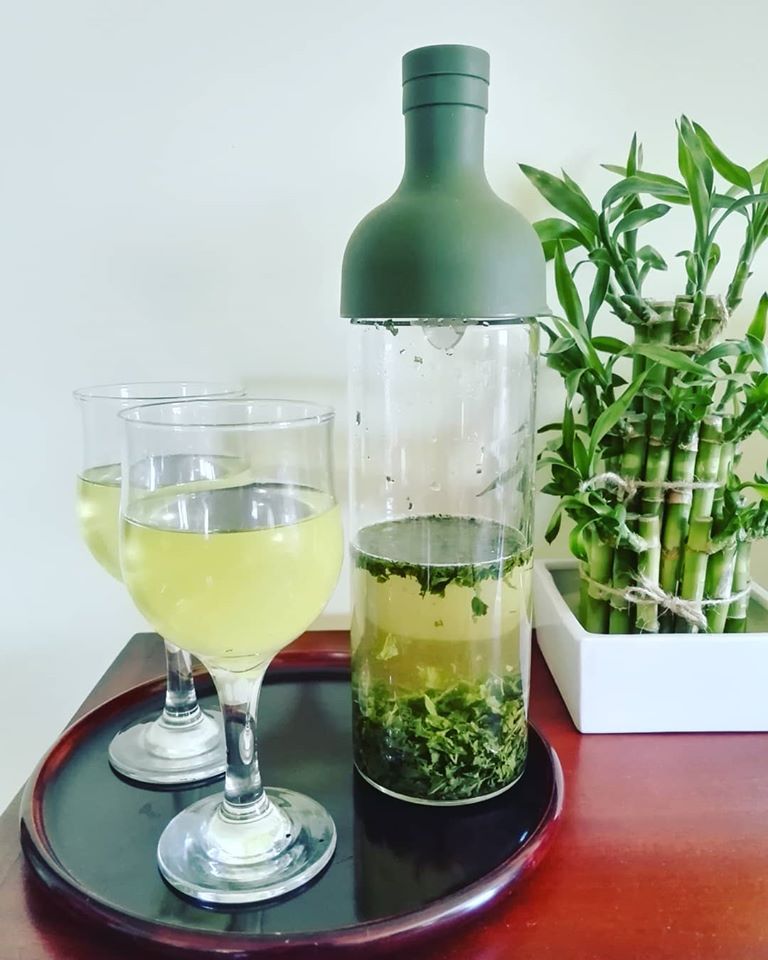
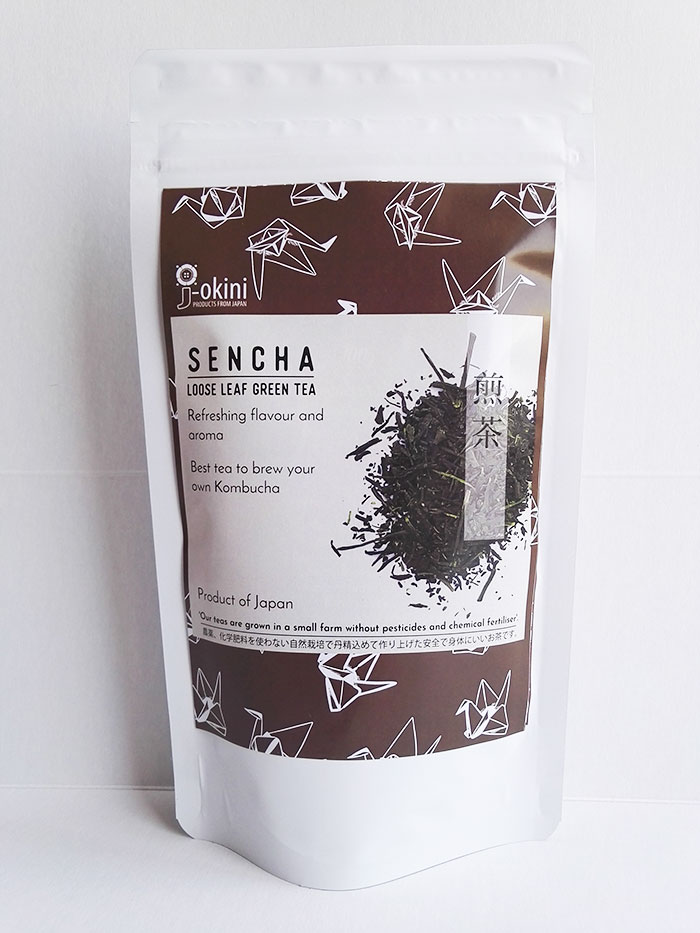
<Vitamin C>
You probably know that Vitamin C is weak with heat. Brewing with water (not hot) brings out more Vitamin C in the tea.
According to Japanese food composition database, Vitamin C in Sencha tea has 260 mg and lemon juice has 50 mg per 100g. It’s 5.2 times more but if you just drink water brewed from 10g Sencha tea, you can only get 6mg, thus I recommend to eat the leaves after used by adding to salad. Get more idea from previous post.
Vitamin C boosts immunity and makes skin look healthier.
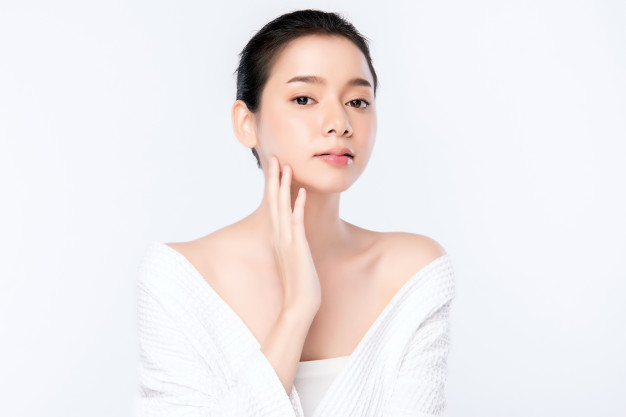
<Caffeine>
If you want less caffeine, you can brew with less hot water. If you brew with cold water (10 degrees), you can decrease 50% of caffeine compared to hot brew (80 degrees). With ice cold water (0 degree), only 20% of caffeine appears in water. Caffeine is also the cause of bitterness, so the tea turns out much less bitter. People who are avoiding caffeine because of high blood pressure and etc may also enjoy the cold brewed green tea (always consult with your doctor).
<L-theanine – calming agent>
Not as much as Kariganecha, Gyokuro or Matcha, but Sencha loose leaf also has L-theanine. L-theanine is a kind of Amino acid which may aid concentration, relax your body and mind, and relief anxiety. If you cold brew, you can bring out this L-theanine more too. L-theanine tastes sweet and the king of Umami in Japanese green tea.
<Catechins – polyphenol>
There are 4 catechins in green tea.
EGC for cold brew
According to recent study in Japan, with cold brew, you can bring out more EGC. EGC activates immune cells ‘Macrophages‘. When harmful bacteria come into our body, ‘Macrophages’ eat them. They also have ability to gather the information about the bad bacteria and memorise them. Therefore, when they find the same bacteria in our body, they attack them immediately. All these result in strengthening immunity.
The ideal temperature to extract EGC is between 4 – 20 degrees for immunity. Check the room temperature and if it is hotter than 20 degrees you can brew it in the fridge with cold water.
EGCG for hot brew
With hot brew, EGCG eġogallocatechin-3-gallate comes out more. EGCG is another catechin and considered to make most efficient antioxidant activity in the plants. It may reduce inflammation, aid weight loss, and help prevent heart and brain disease and many more.
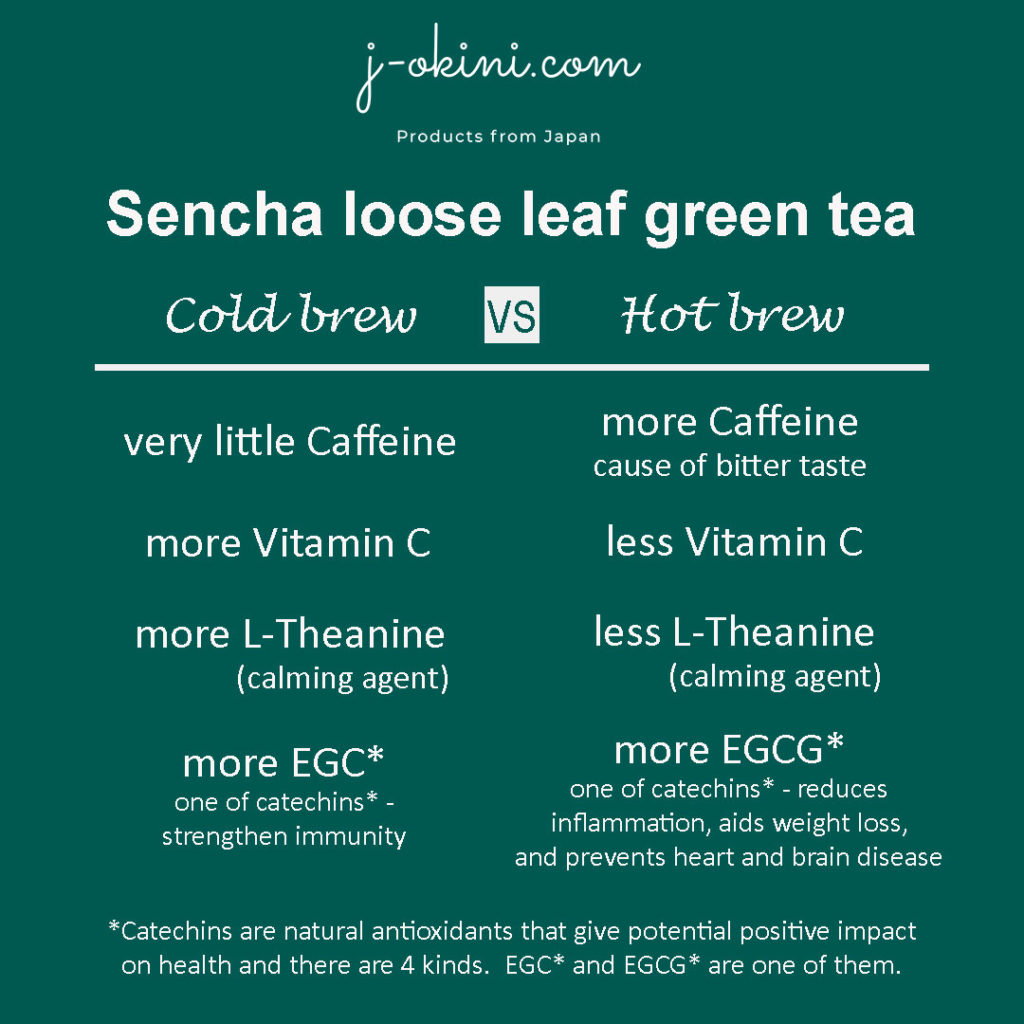
<How do you prepare cold brewed Sencha?>
You can add 1 heaped table spoon (about 8 g) per 700 ml – 1000 ml water. It takes 60 minutes so think ahead. If the tea still looks light after 60 minutes you can stir with a spoon so leaves will open up more and brings out more flavour. You have to drink it within 24 hours. We normally top up more water during the day with the same leaves.
You can also add a slice of lemon.
Even if you don’t have a teapot, you can prepare it in a water jug or measuring jug made of glass and cover like the photo. When you pour the tea in a glass, use a strainer to catch the leaves. I don’t suggest using small tea infuser for cold brew. If you prefer to make it more convenient, we have a cotton tea bag for sale. You put leaves inside this tea bag then put it in a water jug with water and remove it when the flavour becomes to your liking. It is biodegradable so you can discard with your organic garbage.
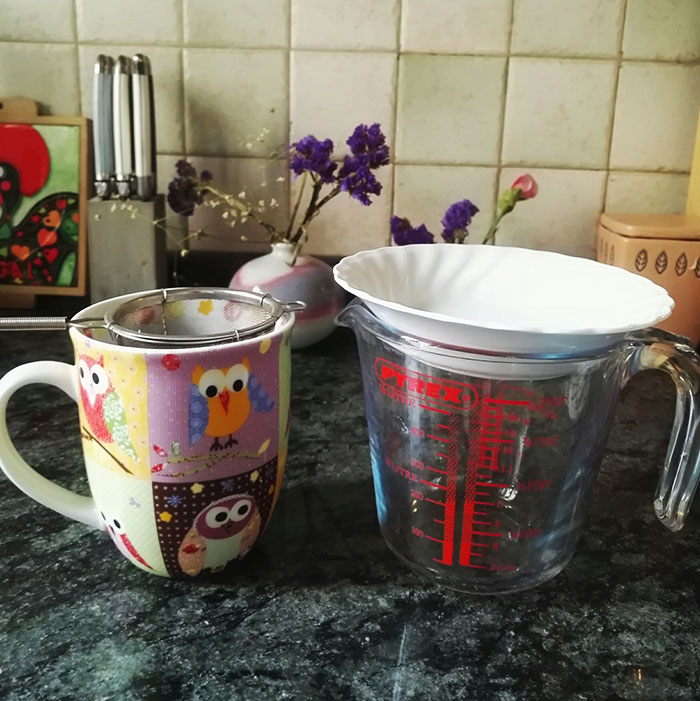
I used to brew it with room temperature water (so more than 25 degrees) and put it in the fridge. Today, I tried with brewing with cold water (4 degrees) and kept it in fridge for 1.50 hour. It was NOT AT ALL bitter! It became sweet mild flavour!
Below photo: 400ml cold water (4 degrees) with 5 g Sencha loose tea and I made till 3rd brew.
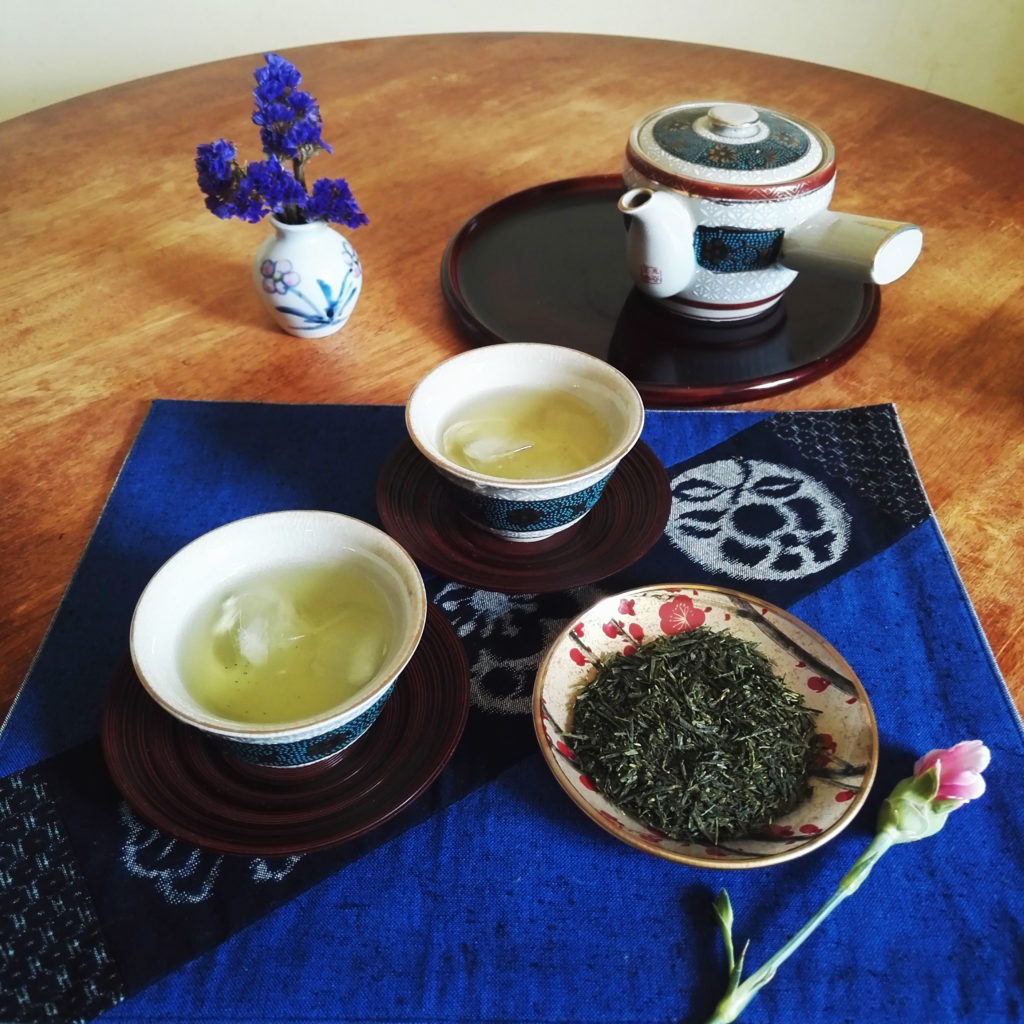
<Difference between Cold brewed tea and Iced tea>
Cold brewed tea is called ‘水出し茶 Mizudashicha’ and Iced tea is called ‘冷茶 Reicha’ in Japanese.
Iced tea is different from Cold brewed tea. Iced tea is that you brew tea with hot water then cool it with cold water and ice cubes to make it cold. Cold brewed tea is you brew tea with cold water (less than 20 degrees)
If you would like benefit of loosing weight, caffeine and EGCG work well so prepare hot brewed tea then add water and ice cubes to make it cold if you want to drink it cold.
The plant compounds I wrote here is only a few and there is also Quercetin in tea. Quercetin is a kind of flavonoid and one of the antioxidant which helps us to prevent from chronic diseases. Quercetin comes out BOTH in the cold and hot water.
<Know your tea and enjoy more!>
I’m talking about Sencha loose leaf today. For Sencha green tea powder, leaves are finely grounded so you ingest all the compounds when you mix with water and drink it. However, if you prepare it with cold water without using hot water, more Vitamin C is there.
Our Genmaicha is also blended with Sencha loose leaf green tea (first flush). So the same thing applies but there is also high grade Matcha green tea powder and toasted brown rice. The flavour and health benefit also become different.
I think knowing this kind of information make your tea time more interesting and they say that the effect of healthy food double up if you know about it and believe in. Enjoy your teatime and feel the power from the nature 🙂
Next I am going to write about Sencha tea processing in Japan. It may sound simple but in fact it is complex! One of the main factors that Japanese green tea is renowned for healthy tea.